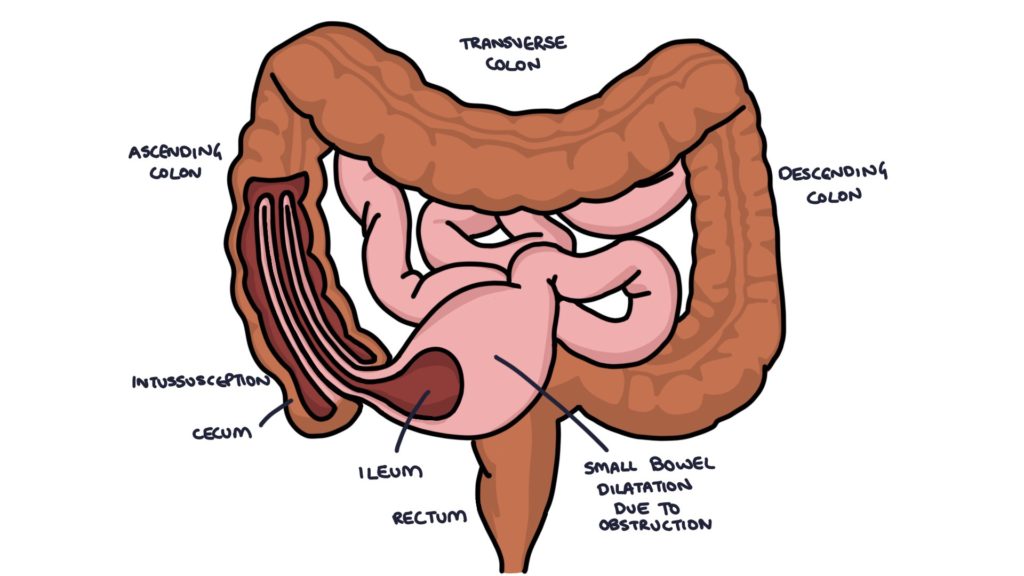Intussusception is a condition where the bowel “invaginates” or “telescopes” into itself. Picture the bowel folding inwards. This thickens the overall size of the bowel and narrows the lumen at the folded area, leading to a palpable mass in the abdomen and obstruction to the passage of faeces through the bowel. It typically occurs in infants 6 months to 2 years and is more common in boys.

Associated Conditions
It is associated with various conditions:
- Concurrent viral illness
- Henoch-Schonlein purpura
- Cystic fibrosis
- Intestinal polyps
- Meckel diverticulum
Presentation
- Severe, colicky abdominal pain
- Pale, lethargic and unwell child
- “Redcurrant jelly stool”
- Right upper quadrant mass on palpation. This is described as “sausage-shaped”
- Vomiting
- Intestinal obstruction
TOM TIP: Look out for the “redcurrant jelly stool” in your exams as this indicates intussusception as a diagnosis. The other classic feature is the sausage-shaped mass in the abdomen. The typical child in the exam will have had a viral upper respiratory tract infection preceding the illness and will have features of intestinal obstruction (vomiting, absolute constipation and abdominal distention). Ultrasound is the initial investigation of choice.
Management
Diagnosis is made mainly by ultrasound scan or contrast enema.
Therapeutic enemas can be used to try to reduce the intussusception. Contrast, water or air are pumped into the colon to force the folded bowel out of the bowel and into the normal position.
Surgical reduction may be necessary if enemas do not work.
If the bowel becomes gangrenous (due to a disruption of the blood supply) or the bowel is perforated, then surgical resection is required.
Complications
- Obstruction
- Gangrenous bowel
- Perforation
- Death
Last updated August 2019
